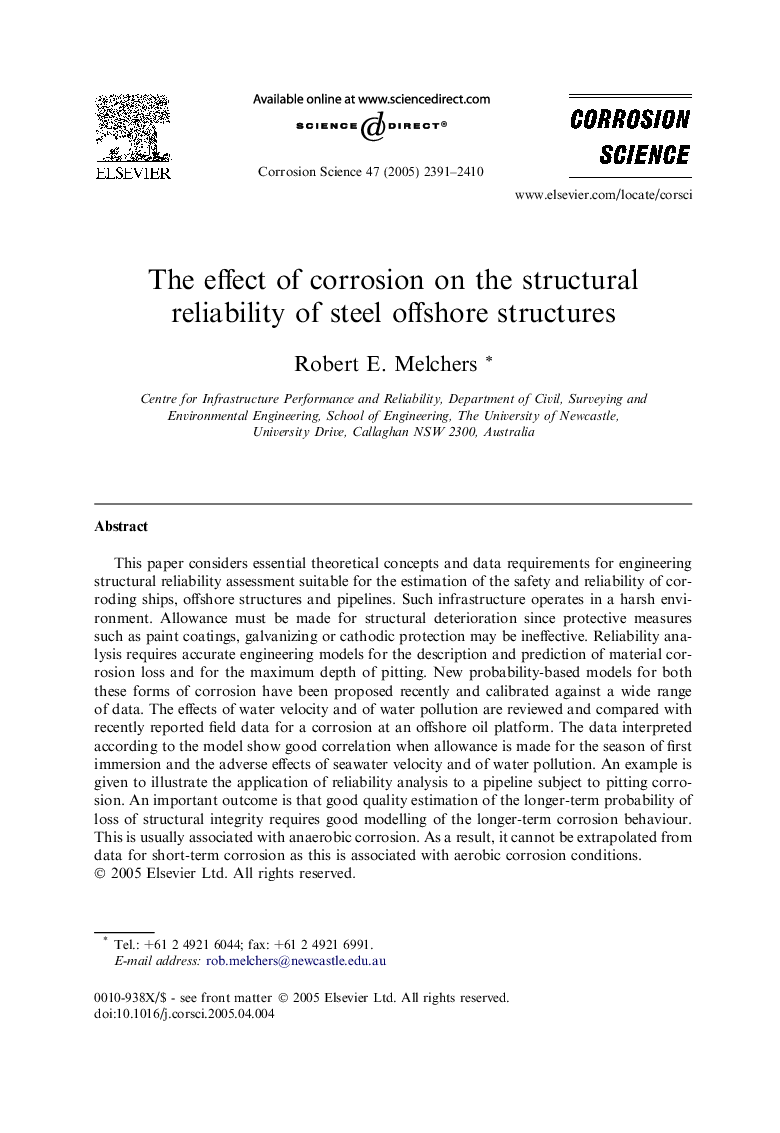| Article ID | Journal | Published Year | Pages | File Type |
|---|---|---|---|---|
| 1472537 | Corrosion Science | 2005 | 20 Pages |
This paper considers essential theoretical concepts and data requirements for engineering structural reliability assessment suitable for the estimation of the safety and reliability of corroding ships, offshore structures and pipelines. Such infrastructure operates in a harsh environment. Allowance must be made for structural deterioration since protective measures such as paint coatings, galvanizing or cathodic protection may be ineffective. Reliability analysis requires accurate engineering models for the description and prediction of material corrosion loss and for the maximum depth of pitting. New probability-based models for both these forms of corrosion have been proposed recently and calibrated against a wide range of data. The effects of water velocity and of water pollution are reviewed and compared with recently reported field data for a corrosion at an offshore oil platform. The data interpreted according to the model show good correlation when allowance is made for the season of first immersion and the adverse effects of seawater velocity and of water pollution. An example is given to illustrate the application of reliability analysis to a pipeline subject to pitting corrosion. An important outcome is that good quality estimation of the longer-term probability of loss of structural integrity requires good modelling of the longer-term corrosion behaviour. This is usually associated with anaerobic corrosion. As a result, it cannot be extrapolated from data for short-term corrosion as this is associated with aerobic corrosion conditions.
